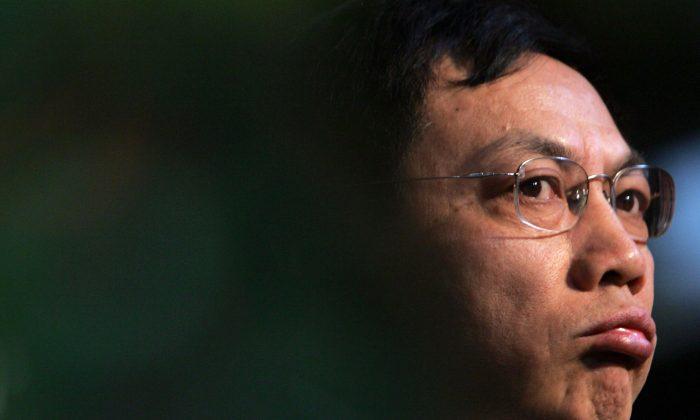The top reasons for traffic congestion in a major metropolis are poor urban planning and a poor road system. This is particularly obvious in Beijing where the state controls everything but forgets about the people.
Beijing is famous for its extremely bad traffic congestion. Greater Beijing now has a population of approximately 12 million and is the second largest Chinese city after Shanghai. It is a major hub for the nation’s highway, expressway, railway, and high-speed rail networks. In 1949, less than one million people lived in the core of the old Beijing. Despite the continuous population growth and increase of vehicles, the city’s layout has not changed significantly since then.
Downtown Government Complexes
The city spreads out in concentric ring roads. Although several main roads were widened, not much change was made to the side roads. The line connecting the Forbidden City and Jingshan Park is still the central axis. The 78-square-kilometer [30-square-mile] area that includes the walled Party compound of Zhongnanhai and the old city contributes to major traffic congestion around the Second Ring Road.
This old area, where traffic layout cannot be updated, however, contains the sites of both expanding business districts and numerous political events. Official compounds and facilities for large-scale activities fill up the avenues across the east and west of Beijing. In the center of the city, along the sides of Tiananmen Square, are also facilities for major state events. This road serves as a main thoroughfare, but it is frequently occupied by political activities. Traffic is then rerouted through parallel roads. The Ring Road’s only option at such times is to serve as a huge parking lot.
Beijing does not have more cars than New York City, London, or Hong Kong, but it is significantly more congested. The stagnating transportation system is the main problem here. While the city continues to expand outward and people are migrating out, there has been no change to the large volume of political and business activities and events, and there is no plan to address the issue of downtown facilities.
Housing Tied to State Jobs
The other issue affecting traffic density is that many people are tied to state-allocated housing and have to spend a lot of time commuting between home and work.
Beijing is China’s political and administrative center with 16 urban, suburban, and rural districts, and it houses all of the important national administrative and political institutions. The headquarters of most of China’s largest state-owned enterprises are also here. Almost half of Beijing’s families have members working in administrative positions. These are not jobs one can freely change or resign from at just any time.
In addition, with nearly all decisions made by the state, about half of Beijing’s housing is linked to these administrative agencies, either by direct allocation or discounted sales to employees. As a result, family members who don’t work for the state often have to travel a long way to their places of work.
When state-owned China Central Television (CCTV) developed sites in the city’s west, a large number of housing units for staff were built there as well. But when CCTV later moved to the east side, the housing on the west site could not be moved and an additional commute was created for the staff.
If Beijing’s city agencies move to the Tongzhou District of Beijing as planned, many employees will be faced with unaddressed commuting problems, but they are not in a position to give up their jobs or residences. Neither are their family members or their children free to change their jobs or schools.
For a family with one member working in a Beijing city agency and the other one working in a central government agency, neither can change their workplace or their residence at will. They have no choice but to suffer the daily grinding commute. Perhaps the planned move to the Tongzhou District is meant to ease the traffic problem in the city, but it may in fact worsen it.
A city’s traffic condition cannot be separated from employment, business, residence, education, medical, and other services. If people have no control over these factors, time spent in traffic will be low on their priority list, as people won’t give up their state jobs, marriage, or children’s education for the convenience of transportation.
In a completely marketized city, people at least have the freedom to choose either where they work or where they live, and this can reduce a great deal of unnecessary commuting. However, if people have no say over both where they live and where they work, it can negatively impact many things in their life.
The mayor of a city should serve the citizens. When a mayor’s main objective is not about the people, it is hard for him to make policies that benefit the people. Charging “congestion fees” and restricting vehicles from driving on certain days does not solve the problem of urban transportation management. Neither do policies to promote electric vehicles ease the traffic. A systemic reform is the only solution.
This is an abridged translation of Ren Zhiqiang’s Chinese article posted to his public Caijing blog on Dec. 6, 2015. Ren Zhiqiang is a real estate tycoon and CEO of Beijing Huayuan Group. He is well-known for his controversial and outspoken online writings about Chinese politics, society, and economics.

Friends Read Free